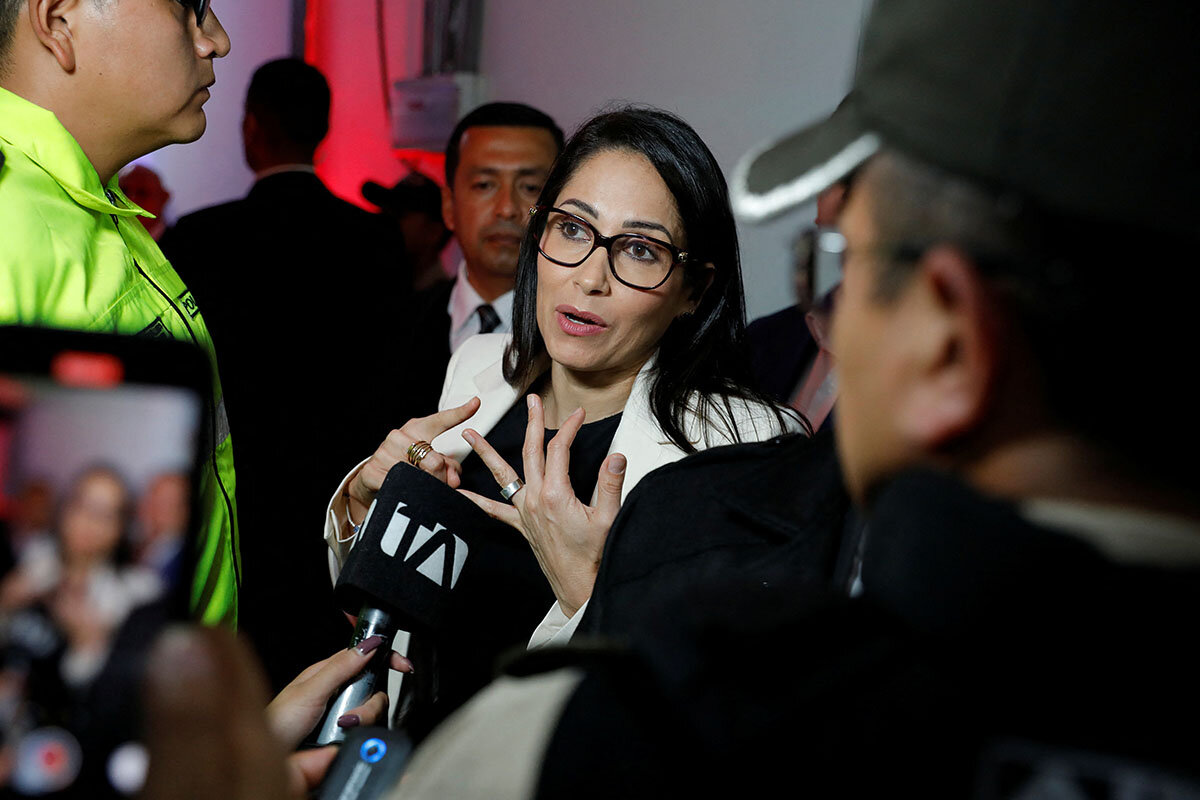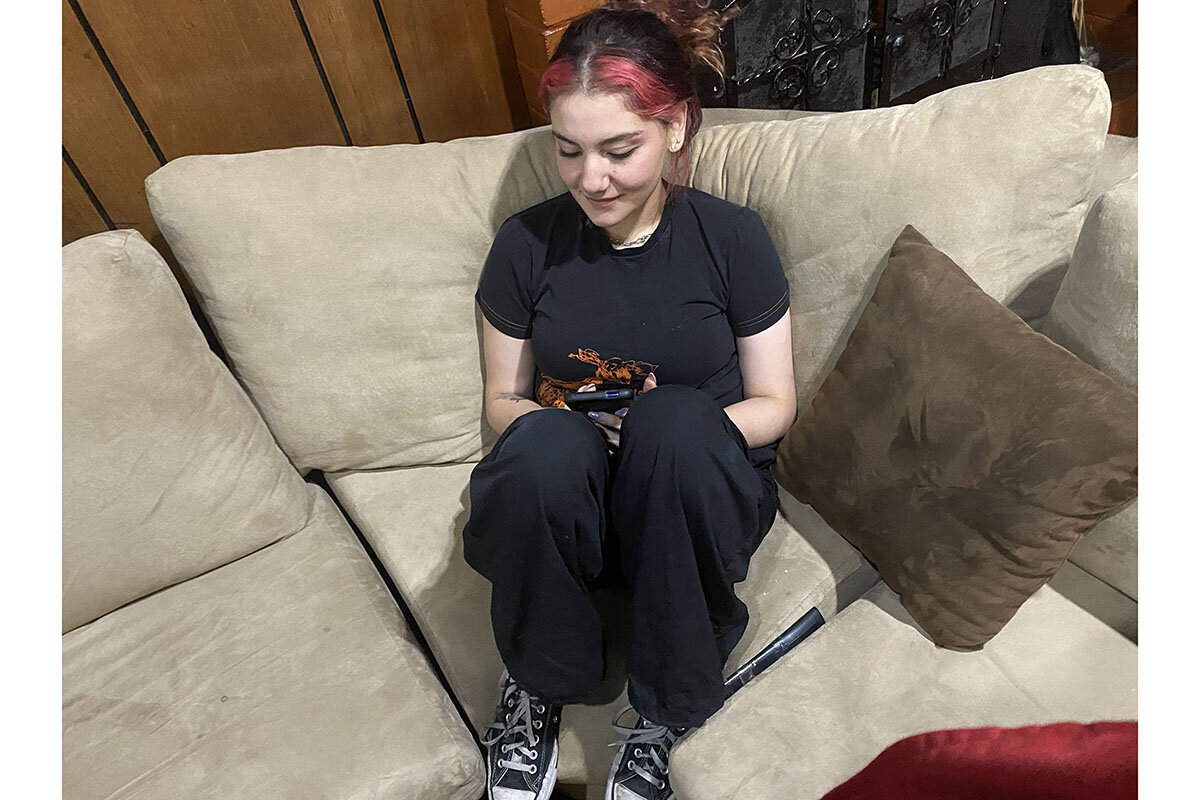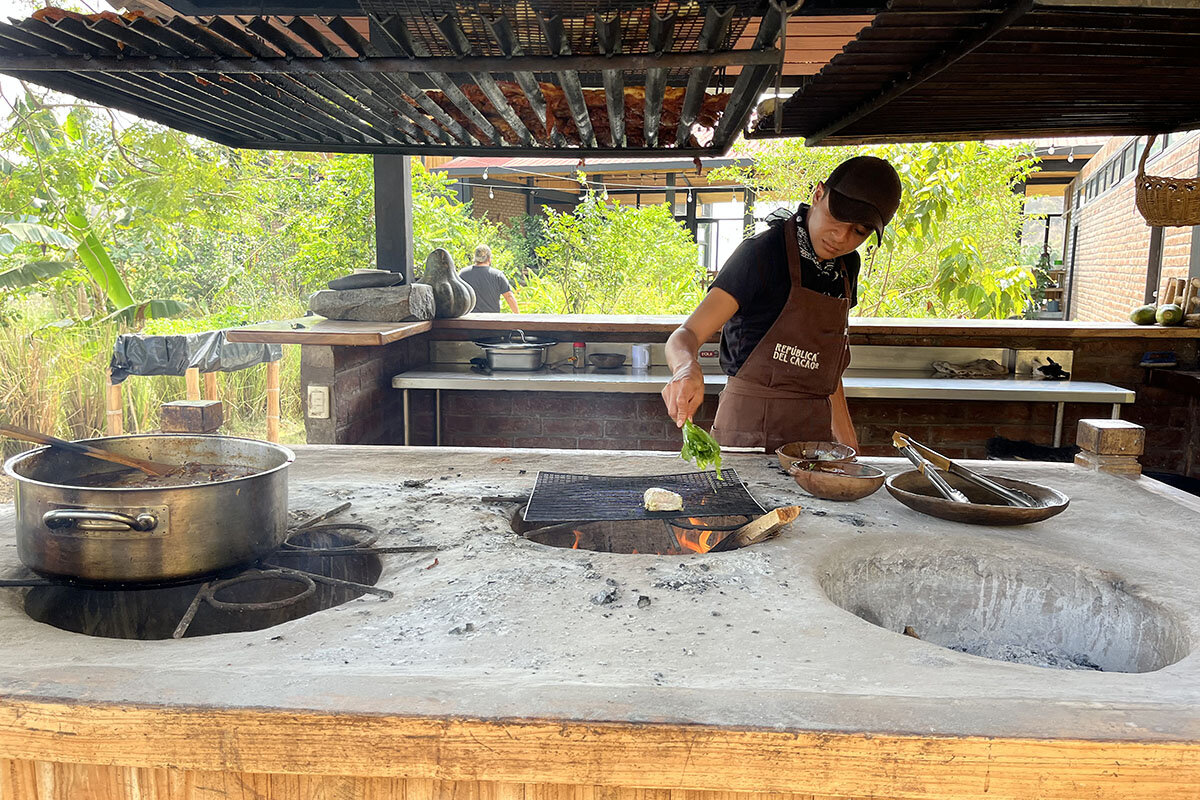Youth violence national priority as Ecuador votes in presidential runoff
Loading...
| Jama and Quito, Ecuador
This time last year, 15-year-old Michael was riding bikes daily through the coastal city of Guayaquil where he’d grown up his whole life, hanging out with his friends after school, and “just being a kid.”
But then his school shuttered overnight last spring after a local gang, increasingly mixed up with international drug trafficking, threatened to kill the entire student body, angry that rivals might be sitting in homerooms. Today Michael finds himself adjusting to adolescence in a small fishing town five hours north, where his family fled in search of safety.
“I feel better here,” Michael says of the dirt-road village made up of just several hundred residents, which has so far evaded the wave of bloodshed sweeping much of the coast. But, he says, he worries that violence might come here too.
Why We Wrote This
A story focused onA security spiral can stun a nation. In Ecuador, where young people increasingly find themselves on both ends of violence, citizens look to politics, and community programs, to put a stop to it.
It wasn’t long ago that Ecuador was considered one of the safest countries in Latin America. Today, it’s becoming one of the most dangerous, particularly for adolescents. Homicides of Ecuadorians between the ages of 15 and 19 years old went up by 500% over the past five years.
As voters head to the polls this weekend in the Andean nation to elect a new president, security is top of the agenda. Many see a country at a crossroads, with the next administration’s strategy on violence holding long-term implications.
But Ecuadorians are looking beyond politics, too, to counter the root causes of violence. Mobilizing in the face of economic hardship and plummeting high school graduation rates, they are homing in on local initiatives to keep youth employed and off the street, adjusting their daily routines, and looking toward the international community for support.
“The state feels very far away for these youth,” says Andrés Williams, a professor who studies youth and violence at the Latin American Faculty of Social Sciences in Ecuador, “while drug traffickers seem very close.”
Youth respond
The Oct. 15 runoff pits leftist Luisa González, a protégé of former populist President Rafael Correa, against center-right candidate Daniel Noboa. Both are promising a mano dura (meaning “iron fist”), hard-line approach to security, with Mr. Noboa proposing floating prisons at sea for the most violent offenders and Ms. González pledging $500 million for policing.
Teenager Martina Hernández sits on the sofa in her family’s living room on a recent Sunday evening in Quito, watching the final presidential debate with her parents. She’s focused more on her cellphone than on the events unfolding on TV. But she acknowledges the conflict at the heart of this debate. “I hear about assaults, robberies, kidnappings all the time. Some of my friends have been robbed,” she says, still staring at her phone.
What Martina would like to see is someone more like Nayib Bukele, the young leader of El Salvador who has dramatically improved homicide while cracking down on civil liberties and human rights. “He seems to know how to manage security,” she says.
Voting is required for Ecuadorians between the ages of 18 and 65, but it’s optional starting at age 16. And the first round of elections saw a historic number of 16- and 17-year-olds casting ballots, says Mr. Williams. “Despite the fear, the insecurity, [young] people demonstrated a sense of hope by voting,” Mr. Williams says. “They seemed to be saying, ‘This is how we can define our future and make our situation better.’”
Outgoing President Guillermo Lasso called snap elections in May when he dissolved the legislature to avoid his own impeachment over corruption allegations. His past year in office has been defined by low approval ratings, economic stagnation, and growing prison violence. Whoever wins this weekend will complete Mr. Lasso’s term, only holding office for 17 months, raising concerns that the next president could end up focusing more on campaigning for their reelection than on making real policy changes.
“The big picture is that democracy, as in rules and procedures, seems to be working. Yet Ecuador is still very unstable, especially from the economic perspective,” says Raul Aldaz, an economics and political science professor at the Universidad San Francisco de Quito. “Enter the threat of organized crime. Unchecked, it could completely undermine the state.”
Just days before the first-round presidential vote in August, candidate Fernando Villavicencio was assassinated when leaving a political rally, bringing international attention to the violence that’s overwhelmed Ecuador in recent years.
Over the weekend, six suspects in Mr. Villavicencio’s murder were found dead by hanging in an Ecuadorian prison. That came on the heels of a $5 million reward offered by the United States for information on the mastermind behind the assassination, a move many Ecuadorians celebrated.
“At this point, we probably need some outside help,” says Daniela Costa, a manager at a Lebanese restaurant outside the capital.
The violence spiral
Five years ago, Ecuador was considered one of the safest countries in Latin America. The calm was credited, in part, to a 2007 model of legalizing street gangs while still targeting drug cartels, which have long used Ecuador’s ports to transport drugs to Europe and the U.S.
But homicide rates more than quadrupled from 5.8 per 100,000 people in 2018 to 26.7 per 100,000 last year, according to the Brazil-based Igarapé Institute. A combination of factors has added to Ecuador’s security tailspin, including the country’s geographic location between cocaine-producing Peru and Colombia, a dollarized economy that makes it attractive for money laundering, a weak president, and high rates of poverty and unemployment.
Over the past year, public shootouts and car bombings have marked public life. President Lasso’s administration has imprisoned gang and organized crime leaders but failed to maintain control of prisons, with multiple deadly riots since late 2020.
The security situation has not spared children, with school shooting drills now commonplace in many coastal provinces. Gang recruitment of youth is particularly high in the coastal provinces of Guayaquil and Esmeraldas.
It feels too close to many Ecuadorian parents raising this generation. Grade-school children take over the beach in the small northern town of San Vincent on a recent afternoon, practicing soccer in a rainbow of neon-hued jerseys.
Josue, the father of one of the players, says the violence that’s been spreading has filled him with dread. “I have all boys at home. Everywhere I look I see threats to their safety,” says Josue, who asked to use only his first name out of concern for his family’s security.
A woman who asks to go by her first initial, G., due to safety concerns, says she tells her four adolescent nieces and nephews not to linger with friends after school and to go straight to an adult if they notice any outsiders passing through their quiet neighborhood. She pauses midsentence to eye a passing motorbike. “Trouble always comes on a motorcycle,” she says.
The coast has been relatively more dangerous than the rest of the country. It also offers fewer economic prospects to young people. Rural Ecuador faces a much higher rate of poverty – at 70% – than urban areas, where 23% live in poverty, according to data from the United Nations.
Ecuador’s economy, expected to grow less than 1% next year, was hard hit by the pandemic. Some two-thirds of the population works in the informal sector. Meanwhile, graduation rates fell drastically across the country, with roughly 63,000 fewer Ecuadorians completing high school between 2022 and 2023.
About 2 miles inland from soccer practice sits Iche, a restaurant and culinary school that opened in 2021 and is trying to boost economic prospects for youth who today can easily be lured by small-scale trafficking, says Adriana Arellano, one of the project’s co-founders.
“We are all asking ourselves, ‘How can we fight against something so big and powerful as organized crime?’” she says.
Their program includes a seven-month training in local culinary tradition – at the center is a traditional stove where students learn to smoke, dehydrate, and grill local meats – and rotations through all parts of running a restaurant.
This project “provides a flicker of hope amid a really hopeless context,” says Ms. Arellano. “At the root of this work is the idea of trying to provide young people a path ahead.”
Maria Sol Borja contributed reporting from Quito, Ecuador.









